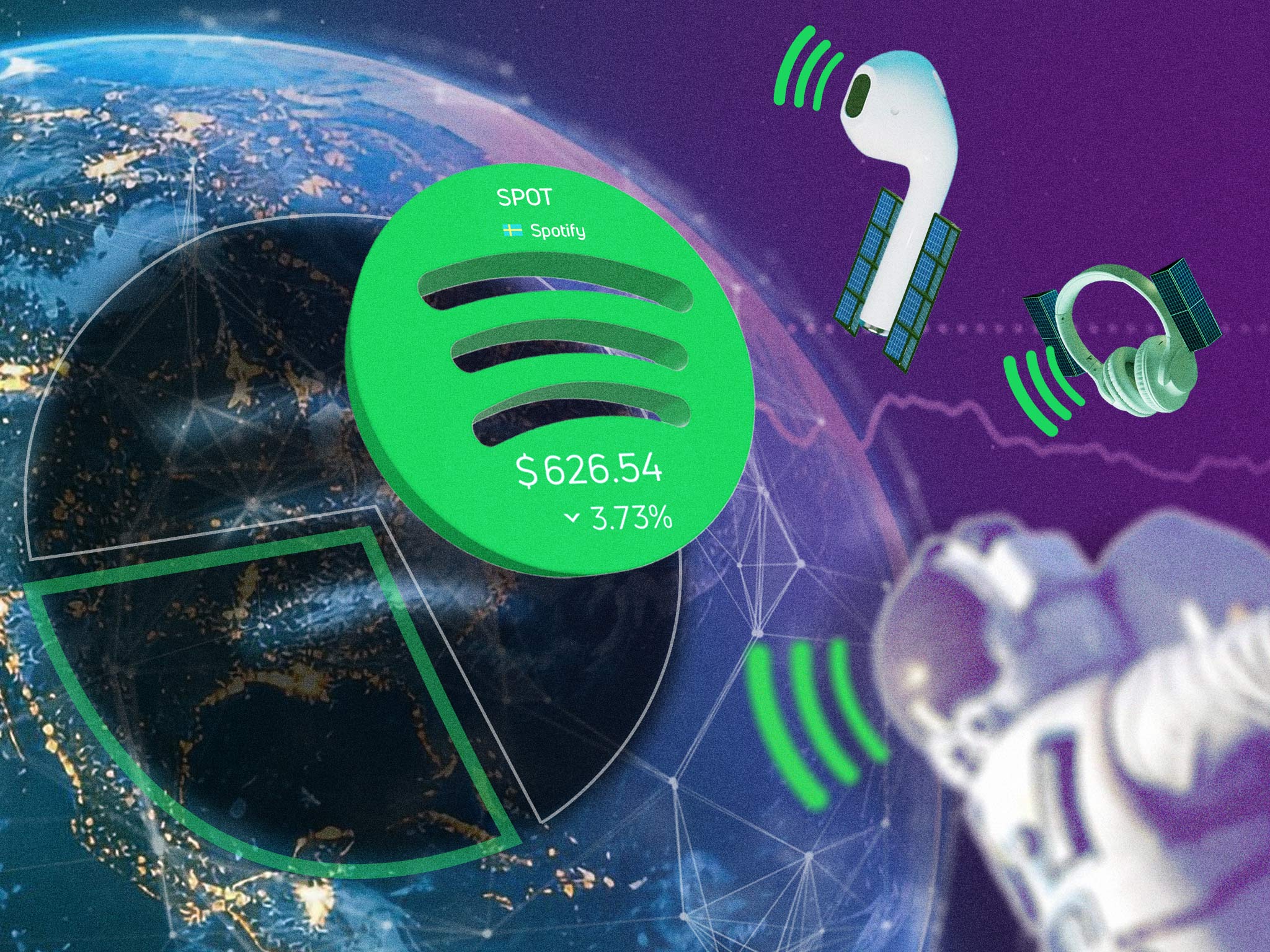Spotify Technology (NYSE: SPOT) shares took a 12% dive Tuesday, after a disappointing earnings report for the world’s biggest music-streaming platform.
But its future still appears bright, with plenty of room for Sweden-based Spotify to expand. The stock is still up 96% over the past 12 months and has rebounded 5.3% from Tuesday.
As for the earnings, Spotify registered a net loss of 86 million euros (about $100 million) in the second quarter, reversing a 274-million euro profit from a year earlier. Revenue rose 10% to 4.19 billion euros, lagging analysts’ estimate of 4.27 billion euros, thanks largely to the euro’s strength.
An increase in personnel, professional services and marketing costs helped create the loss. Also, Spotify incurred social charges of 115 million euros. Social charges refer to payroll taxes tied to employees’ share-based compensation. The taxes climbed because Spotify’s share price climbed. Without the social charges, Spotify would have showed a profit.
On many metrics, Spotify continues to shine. Its monthly active users expanded 11% to 696 million in the second quarter, beating the company’s forecast by 7 million users. Foreign markets led the gains. Also, the company’s premium subscriber count ascended 12% to 276 million, besting its guidance by 3 million subscribers.
Market-leading share
Spotify owns a 30-35% share of the global music streaming market, with Tencent Music and YouTube way behind at 17%-18%. An Evercore ISI survey in June found that 38% of respondents in the U.S. and U.K. chose Spotify as their No. 1 music app, compared to 22% who chose Apple Music.
Many countries have low penetration levels. So it would seem that Spotify has a lot of room for growth. “Our outlook for Spotify is bright, due mainly to the opportunity for the global music streaming market to expand and the moat we think the firm has to keep its edge over competitors,” wrote Morningstar analyst Matthew Dolgin.
He believes premium subscriptions will continue accounting for almost 90% of revenue, as they will remain the most appealing to consumers. Paid subscriptions come without ads, while free subscriptions have them.
Another revenue area poised for double-digit growth is advertising, Dolgin said. Spotify can boost ad rates through better targeting and monetization of Spotify podcasts on other platforms, he said.
Advertising potential
To be sure, Spotify acknowledged a disappointing performance for advertising in the second quarter, with ad revenue dipping 0.7%. “The one area that hasn’t yet met our expectations is our ads business,” CEO Daniel Ek said on the earnings conference call. “We’ve simply been moving too slowly, and it’s taken longer than expected to see the improvements we initiated to take hold.”
Advertising now makes up about 11% of Spotify’s revenue. Given that 60% of Spotify subscribers receive ads, that points to a major opportunity, notes Dan Gallagher of The Wall Street Journal. Meanwhile, Spotify probably can raise prices, as the cost of U.S. plans has climbed only 20% in the last 13 years.
In addition, the company is just beginning to create a podcast service. Podcasts have an advantage over music in that they don’t require hefty licensing deals with record companies. Podcasts will add almost two percentage points to Spotify’s gross margins by 2030, said Oppenheimer analyst Jason Helfstein, as cited by The Wall Street Journal.
So while Spotify has hit some speedbumps recently, the road ahead may be smoother.




Comments